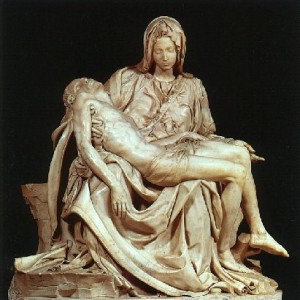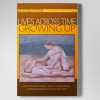Caravaggio: 400 years later, a Psychoanalytic Portrait of Emotional Expression of Ambivalence and Ambiguity.1
Abstract:
Rome celebrated the 400th anniversary of Michelangelo Marisi da Caravaggio’s death with an historical exhibition of his brief life-time’s work. Yet, psychoanalysis has not studied this master’s work extensively, despite his compelling portrayal of a full range of human affects, including ambivalence. Psychoanalysis has made contributions to studies of artistic pioneers such as da Vinci and his childhood bird dream (Freud, 1910), Michelangelo Buonarroti’s David (Freud, 1914), Blatt’s (1994) masterly observations of Giotto’s chapel and the use of blue sky as psychologically innovative, or Spitz-Handler’s (1994) study of Magritte’s play with external reality. What can we learn about Caravaggio’s work — including innovative contributions such as visual representation of expressed emotions, particularly negative emotions, including ambivalence and remarkably candid, even critical, self-representations — and how can this late sixteenth century artist teach us about the development of concept of mind underlying psychoanalysis?
Rome celebrated the 400th anniversary of Michelangelo Marisi da Caravaggio’s death with an historical exhibition of his brief life-time’s work. Yet, psychoanalysis has not studied this master’s work extensively, despite his compelling portrayal of a full range of human affects, including ambivalence. Psychoanalysis has made contributions to studies of artistic pioneers such as da Vinci and his childhood bird dream (Freud, 1910), Michelangelo Buonarroti’s David (Freud, 1914), Blatt’s (1994) masterly observations of Giotto’s chapel and the use of blue sky as psychologically innovative, or Spitz-Handler’s (1994) study of Magritte’s play with external reality. What can we learn about Caravaggio’s work and how can this late sixteenth century artist teach us about the development of concept of mind underlying psychoanalysis?
Carravagio made innovative contributions to visual representation of expressed emotions, particularly negative emotions, including ambivalence and remarkably candid, even critical, self-representations. That is, he portrays intensely emotional moments with greater complexity and ambiguity than many predecessors. We suggest that he foresees Freud’s discovery of our complex emotions in intimate relations (1923).2 Here, we will study his work, using psychoanalytic concepts, complemented by Ekman’s approach to reading expression of emotion – particularly facial expression, but also gestural and emblematic. We also discuss how Caravaggio’s work is an example of re-presenting personal and societal dilmmas — in this case, the Black Plague’s effect on Caravaggio’s childhood and community — even if his work does not resolve personal and societal
crises as Erikson suggests of creative individuals (Erikson, 1994; Schutze, 2009). Note that we foster a synergistic approach between art’s history and the science of the mind: we can learn historically about how and when certain concepts of mind developed by looking at pre-psychoanlytic aesthetics (such visual art, literature, music). In turn, we can understand earlier representations of inner reality via what psychoanalysis has learned of the mind over the past century. For this paper, we concentrate on the first approach: what does Caravaggio show us about representations of emotions and intimacies as he represents them in Rome’s fin-de-siecle 1500’s, representations that still move us?
Freud set us on this psychoanalytic exploration of aesthetics when he wrote how we can better understand art and other disciplines via psychoanalysis. He also deepens our understanding of aesthetics as “…not merely the theory of beauty but the theory of the qualities of feeling” (Freud, 1919, p. 218). Caravaggio presses us towards more intense, complex, at times ambiguous qualities of feeling.
Spitz Handler (1989) outlines three psychoanalytic approaches to aesthetic studies all initiated by Freud: pathography, psychoanalytic textual interpretations, and psychoanalytic understand of art’s effects on the audience. Szajnberg (1992, 1996, 2010) adds a further variation: following Freud’s remark about literary masters describing aspects of inner life that Freud could systemize (and of course treat), Szajnberg describes how pre-psychoanalytic aesthetic works anticipated psychoanalytic knowledge of the Unconscious, the notion of working in layers and the centrality of the dyadic relationship. Further, Szajnberg (2010, 2012) suggests – following both Auerbach (1954) or Bergner and Luckmann (1996) — that our Western culture’s concept of person has been constructed over two millennia. We learn about developmental shifts (backwards and forwards) in our concepts of what we consider “human” at pivotal points in time. This is an extension of Erik Erikson’s idea of how creative individual resolve crises, as he demonstrated with Martin Luther, Gandhi, and Freud (Erikson, 1994). Ogden’s recent subtle studies of Kafka and Borges (2010), adds a new variation to Spitz Handler’s three models: using what we know of the artist’s life and work so that one enlightens the other.
Blatt’s (1984) study of Giotto sets a conceptual stage for our exploration of Caravaggio. Giotto’s thirty-eight Giotto fourteenth century chapel frescos initiated a Renaissance representation of infinity3 (using celestial blue rather than medieval gold for the sky), perspective/three-dimensional portrayals, and steps towards naturalism and humanism (versus Medieval other-worldly art). Blatt reviews stages of visual representation in Western Art, beginning with preclassical monadic, diagrammatic, developing into Classical dyadic without comprehensive spatial representation, to Medieval more concrete, static and stylized human portrayals (such as the Byzantine), to the Renaissance innovations of three-dimensionality, and associated humanism and naturalism. The latter diminishes the distance between the sacred and profane (Eliade, 1959). Burkhardt (Blatt, 1984) refers to the Renaissance as a recrudescence of Greek concepts of self-confidence in humanity and the dignity of man. Caravaggio pushes Renaissance art further: both by including the mundane/debased as part of the “dignity” of man and by flattening perspective, paradoxically focusing us on the subjects’ interior lives, deepening the picture’s emotional representation and evoking emotionality in the viewer.
This paper looks at how Caravaggio leaps forward in the visual representations of complex emotions, including those negative, teasing and ambivalent, as well as the reciprocal interplay of emotions among those portrayed. Caravaggio paints intriguing, compelling dialogues among the emotions of those drawn together; one set of emotions plays against another, like the point/counterpoint of Bach’s music. A century following his namesake Michelangelo Buonarroti, Caravaggio pushes the boundaries expressed in the Sistine Chapel, even as he “quotes” visually from the master’s early Pieta.4 Some of Caravaggio’s work commissioned by the Holy Orders were considered so controversial, they were refused. In others, Caravaggio subversively slips past the Church’s eye or tweaks its nose with subtle gestures, such as sneaking two penitent drudge workers with pied noir into a portrayal of the Virgin, that is, inserting contemporary “lowly” characters into Church art.
We would like to have childhood background on this “avant guarde” artist, but little is known. The first-born child, his father and a sibling died of Plague when Caravaggio was three; his mother died when he was eighteen, then he moved to Rome, where artists could thrive under the Church’s commissions. Previously, he was apprenticed to Peterzano, a proud student of Titian. We can see Titian echoes in some of Caravaggio’s subjects, such as the crowning of Christ, even as Caravaggio presents this with greater intensity.5 Caravaggio dies in exile at forty-one, several years after killing an opponent in a tennis match in Rome. Escaping from prison, he remains on the lam, protected by patrons. We will return to one of his last pieces: David holds Goliath’s severed, blood- dripping head with Caravaggio’s face in Goliath’s skull; David appears somber, as he looks aside over the severed head; Goliath/Caravaggio, mouth agape, brows still knitted, appears as if puzzled. David’s cross-shaped sword rests loosely at his side, or in an earlier version, against the back of his own neck.
However, art historians offer background foundations upon which this artist built his work. Barasch writes on emotional expression in art: in ancient Greece and reappearing in the Renaissance, “a system of expressive facial signs…formed an important matrix within which painters…shaped their work” (Barasch, 1991, p. 16) And, referring additionally to gesture – an important component that Carvaggio used synergistically with facial expression – the “gestural situation.. (is composed of) the gesticulating figure…granting neighboring figures..potential for expression.. a tool for moving and convincing the audience” (Barasch, 1991, p. 18). When Barasch uses the word “moving” here, he includes being moved emotionally, as Leonardo da Vinci insisted was necessary (da Vinici, 2004): “the most important things.. in the analysis of a painting are the movements appropriate to states of mind.. such as desire, contempt, anger, pity and the like.” We note that the “movements” that da Vinci refers to specifically are what we psychoanalysts would call emotions. With that, let us turn to how Caravaggio tried to move his audiences.
1 I thank Bruno Bettelheim for introducing me to art and psychoanalysis, Sidney Blatt for discussing and critiquing this paper, the Wallerstein Research Fellowship which has supported me since 2005 and my daughter Lily for accompanying me to Italy. I am grateful to Paul Ekman’s reading of the emotions in these paintings and for his dear friendship.
2 Of course, Freud said that he did not “discover” complexity of emotions, but he developed a technique to understand and heal their disruptive effects.
3 Playing with infinity could be fatal for the next three hundred years: in 1600, Bruno was burned at the stake by the Venice Inquisition, in part for his inquiry into infinity; Copernicus delayed publication of his work for a half-century until 1543, nearing his death (Blatt 1984).




